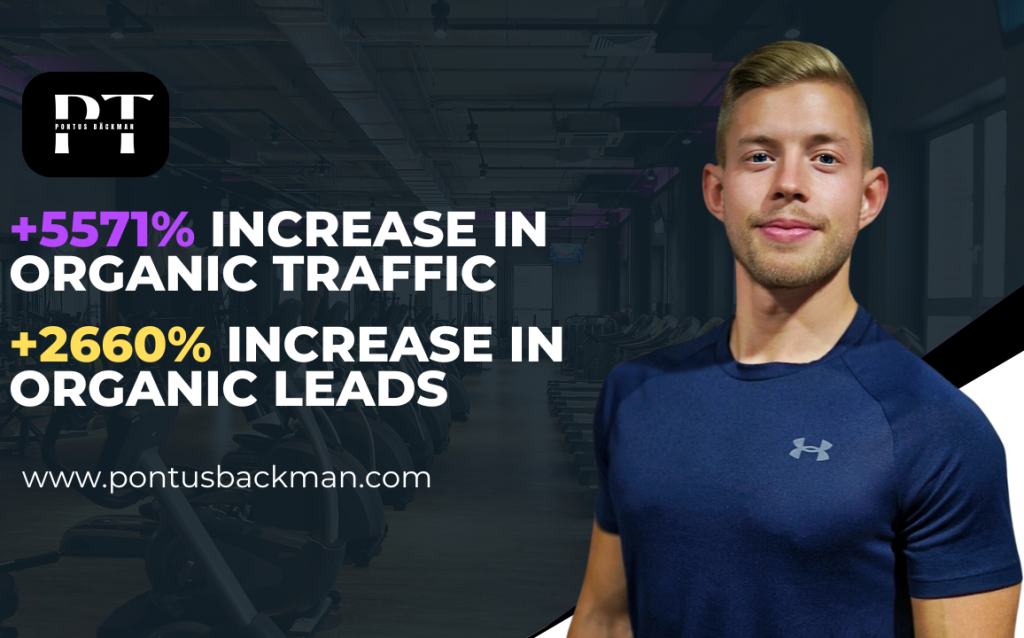Is your website delivering the experience visitors expect? If you’re seeing high bounce rates, declining conversions, or poor search rankings, your Core Web Vitals might be the culprit. This step-by-step guide will help you diagnose and fix these critical performance metrics to improve both user experience and search visibility.
Difficulty level: Intermediate
Estimated time: 2-4 weeks (depending on site complexity)
Tools you’ll need:
- Google PageSpeed Insights
- Google Search Console
- Chrome DevTools
- Image optimization tools
- Basic knowledge of HTML/CSS
Let’s transform your site’s performance by methodically addressing each Core Web Vital. We’ll start with understanding why these metrics matter before diving into specific optimization techniques.
Why Core Web Vitals matter for your business
Core Web Vitals are more than just technical metrics—they’re directly tied to how users experience your website. Google has made these metrics official ranking factors, meaning they affect where your site appears in search results.
The three main Core Web Vitals measure distinct aspects of user experience:
- Largest Contentful Paint (LCP) – measures loading performance (ideal: under 2.5 seconds)
- First Input Delay (FID) – measures interactivity (ideal: under 100 milliseconds)
- Cumulative Layout Shift (CLS) – measures visual stability (ideal: under 0.1)
Why should you care? Research shows that when page load times increase from 1 to 3 seconds, the probability of a visitor bouncing increases by 32%. Poor Core Web Vitals directly impact your business outcomes through:
- Higher bounce rates when pages load slowly
- Lower conversion rates due to frustrated users
- Reduced search visibility as Google prioritizes faster sites
- Diminished brand perception when your site feels sluggish
Simply put, optimizing your Core Web Vitals isn’t just about pleasing Google—it’s about creating a better experience that keeps visitors engaged and more likely to convert.
Essential tools to measure Core Web Vitals
Before making improvements, you need to accurately measure your current performance. These diagnostic tools will help you establish a baseline and identify specific issues:
Google PageSpeed Insights
This tool provides both lab and field data for your Core Web Vitals. To use it:
- Visit PageSpeed Insights
- Enter your URL and click “Analyze”
- Review both mobile and desktop scores
- Look for specific recommendations in the “Opportunities” and “Diagnostics” sections
PageSpeed Insights gives you actionable advice tailored to your specific page, making it an excellent starting point for optimizations.
Google Search Console Core Web Vitals Report
Search Console shows you how real users experience your site across multiple pages:
- Log into Google Search Console
- Navigate to “Experience” → “Core Web Vitals”
- Review URLs grouped by status (Poor, Needs Improvement, Good)
- Prioritize “Poor” URLs for immediate attention
This report helps you identify patterns across your site rather than just individual page issues.
Lighthouse in Chrome DevTools
For more detailed analysis:
- Open Chrome DevTools (F12 or right-click → Inspect)
- Go to the “Lighthouse” tab
- Select “Performance” and run the audit
- Review detailed metrics and suggestions
When interpreting reports, focus on identifying your weakest metric first. A site is only as strong as its poorest-performing Core Web Vital.
How to optimize Largest Contentful Paint (LCP)
LCP measures how quickly the largest content element (usually an image or text block) becomes visible to users. Here’s how to improve it:
Optimize server response time
A slow server creates delays before browsers can even begin rendering content:
- Upgrade your hosting if response times exceed 200ms
- Implement server-side caching
- Consider a Content Delivery Network (CDN) for global audiences
- Optimize database queries on dynamic sites
Prioritize critical resources
Help browsers identify what to load first:
- Use
preloadfor critical resources (especially hero images) - Defer non-essential JavaScript and CSS
- Inline critical CSS instead of using external files
For example, to preload your hero image:
<link rel="preload" href="hero-image.jpg" as="image">
Optimize images aggressively
Images are often the largest contentful element and prime candidates for optimization:
- Compress all images using tools like TinyPNG or ShortPixel
- Convert images to next-gen formats like WebP
- Use responsive images with the
srcsetattribute - Consider removing unnecessary images entirely
Implementing lazy loading for non-critical images (those below the fold) using the loading="lazy" attribute can also significantly improve LCP by allowing browsers to focus on loading visible content first.
Reducing First Input Delay (FID) effectively
FID measures how quickly your site responds when users try to interact with it. JavaScript is the primary culprit behind poor FID scores:
Minimize JavaScript execution time
The more JavaScript that needs processing, the longer users wait:
- Remove unused JavaScript (code coverage in DevTools can help identify this)
- Split large JavaScript bundles into smaller chunks
- Minify and compress all JavaScript files
Break up long tasks
Tasks that take more than 50ms block the main thread and cause delays:
- Split long-running code into smaller, asynchronous tasks
- Use
requestIdleCallback()for non-essential operations - Implement code-splitting to load JavaScript as needed
Implement web workers
Web workers run JavaScript in background threads, keeping the main thread responsive:
- Move complex calculations to web workers
- Consider using libraries like Comlink to simplify worker communication
- Keep UI updates on the main thread, but do heavy processing in workers
Remember that smooth interactivity creates a professional impression that builds trust with your visitors. A responsive site feels polished and reliable.
Strategies to minimize Cumulative Layout Shift (CLS)
CLS measures how much elements move around as the page loads. These unexpected shifts frustrate users and can cause accidental clicks:
Set explicit dimensions for all media
When browsers don’t know an element’s size in advance, they can’t reserve space for it:
- Always include
widthandheightattributes on images and videos - Use aspect-ratio boxes for responsive media
- Include dimensions even when using CSS to resize elements
For example:
<img src="product-image.jpg" width="640" height="480" alt="Product description">
Reserve space for ads and embeds
Third-party content often causes the worst layout shifts:
- Pre-allocate space for ad slots with CSS
- Use placeholders for embeds until they load
- Consider fixed-size ad containers
Manage web fonts properly
Font loading can cause significant layout shifts if not handled correctly:
- Use
font-display: swapto prevent invisible text - Preload important fonts
- Consider using system fonts when possible
- Include font fallbacks with similar metrics
For dynamic content that appears after user interaction (like search results or filtered products), use techniques like skeleton screens or fixed-height containers to maintain visual stability.
What should I prioritize when fixing Core Web Vitals?
With limited time and resources, you need a strategic approach to improving Core Web Vitals:
Assess impact vs. effort
Use this framework to decide where to start:
| Priority | Characteristics | Examples |
|---|---|---|
| High | High impact, low effort | Image compression, setting dimensions |
| Medium | High impact, high effort | Server optimization, code refactoring |
| Low | Low impact, low effort | Optimizing below-fold elements |
| Lowest | Low impact, high effort | Complete redesigns, complex animations |
Focus on your weakest vital first
Your overall performance is judged by your worst Core Web Vital. If your LCP is excellent but CLS is poor, prioritize fixing CLS issues first.
Target high-traffic pages
Start with pages that get the most visitors:
- Homepage
- Popular landing pages
- High-conversion product pages
- Key blog posts
Combine quick wins with more fundamental improvements. For example, compress images immediately (quick win) while working on implementing a CDN (fundamental improvement) in parallel.
Troubleshooting common Core Web Vitals obstacles
Even with the best optimization efforts, you may encounter persistent challenges:
Managing third-party scripts
Third-party tools often cause performance issues:
- Audit all third-party scripts and remove unnecessary ones
- Load non-essential scripts after page load using
deferorasync - Use tag managers to control script loading
- Consider self-hosting critical third-party resources
Handling render-blocking resources
Resources that block rendering prevent users from seeing content quickly:
- Move non-critical CSS to separate files loaded asynchronously
- Inline small, critical CSS in the
<head> - Use
preconnectfor important third-party domains - Leverage browser caching with appropriate cache headers
Addressing mobile-specific issues
Mobile devices often face unique challenges:
- Test on actual devices, not just emulators
- Consider implementing AMP for highly optimized mobile pages
- Use responsive images to serve appropriately sized files
- Simplify layouts for mobile users
When troubleshooting, isolate variables by testing changes individually rather than implementing multiple fixes at once. This helps identify which optimizations have the biggest impact.
Monitoring and maintaining optimal Core Web Vitals
Optimization isn’t a one-time task—it requires ongoing attention:
Implement continuous monitoring
Set up systems to alert you to performance regressions:
- Schedule weekly reviews of PageSpeed Insights scores
- Set up custom alerts in Google Analytics for significant changes in bounce rate
- Use tools like Lighthouse CI to test performance in your development workflow
Establish performance budgets
Create clear guidelines to prevent future issues:
- Set maximum file sizes for different asset types
- Limit the number of HTTP requests per page
- Establish thresholds for each Core Web Vital
Create a pre-deployment testing workflow
Prevent problems before they reach production:
- Test changes in a staging environment
- Run automated performance tests before deployment
- Include performance reviews in your QA process
Performance optimization is a continuous journey. As your site evolves with new features, content, and design elements, regularly revisiting your Core Web Vitals ensures you maintain the gains you’ve worked hard to achieve.
By methodically working through these optimization steps, you’ll not only improve your search rankings but create a website that delights visitors with its speed and stability. Better Core Web Vitals translate directly to improved user experience and, ultimately, better business outcomes through higher engagement and conversion rates.
Ready to take your website’s performance to the next level? Start by measuring your current Core Web Vitals today, then implement these strategies one by one to see dramatic improvements in both user experience and search visibility.






